Lima, Peru is a haven for bird watchers, offering a wide variety of birds in a stunning natural setting.
From the brightly-colored hummingbirds of the Andes to the vast array of seabirds along the coast, Peru’s capital city is home to some of the most interesting and diverse bird species in the world.
In fact, over 500 species of birds have been recorded in the Lima region, making it a great destination for both novice birders and experienced ornithologists alike.
From the wetlands of the Chancay Valley to the cloud forests of the Andes, Lima offers an incredible range of habitats and bird species that will delight even the most discerning bird-watcher.
1. Inca Tern
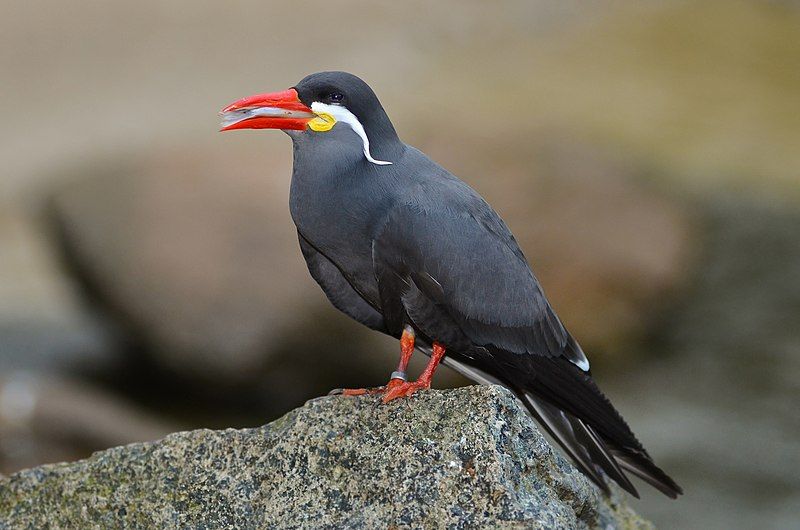
The Inca tern is a species of bird found in Chile, Ecuador, and Peru that is currently classified as Near Threatened by the International Union for Conservation of Nature.
It is a member of the subfamily Sterninae, which is part of the family Laridae, commonly known as the gulls, terns, and skimmers.
The Inca tern is known to wander away from its native range and has been spotted occasionally in Central America and Hawaii, although it is not known to breed in those areas. The Inca tern is easily identifiable, with its white body, black mask, and slate gray wings.
It has a unique crest of feathers which it can raise or lower, depending on its mood. It is a relatively large tern, measuring between 28 and 33 cm in length, with a wingspan of up to 45 cm.
The Inca tern feeds primarily on small fish, which it catches by flying over the water and plunging in to grab its prey. It also feeds on crustaceans and mollusks. It nests in colonies on coastal cliffs and rocky islands.
The eggs are incubated for around 28 days, and the chicks fledge at around 45 days. The current population of Inca terns is estimated to be around 15,000, with the majority of birds living in Peru.
The population is decreasing due to human activities such as fishing, marine pollution, and habitat destruction. The species is currently listed as Near Threatened and is in need of conservation efforts in order to ensure its future survival.
| Kingdom | Animalia |
| Phylum | Chordata |
| Class | Aves |
| Order | Charadriiformes |
| Family | Laridae |
| Genus | Larosterna |
| Species | L. inca |
2. Amazilia Hummingbird
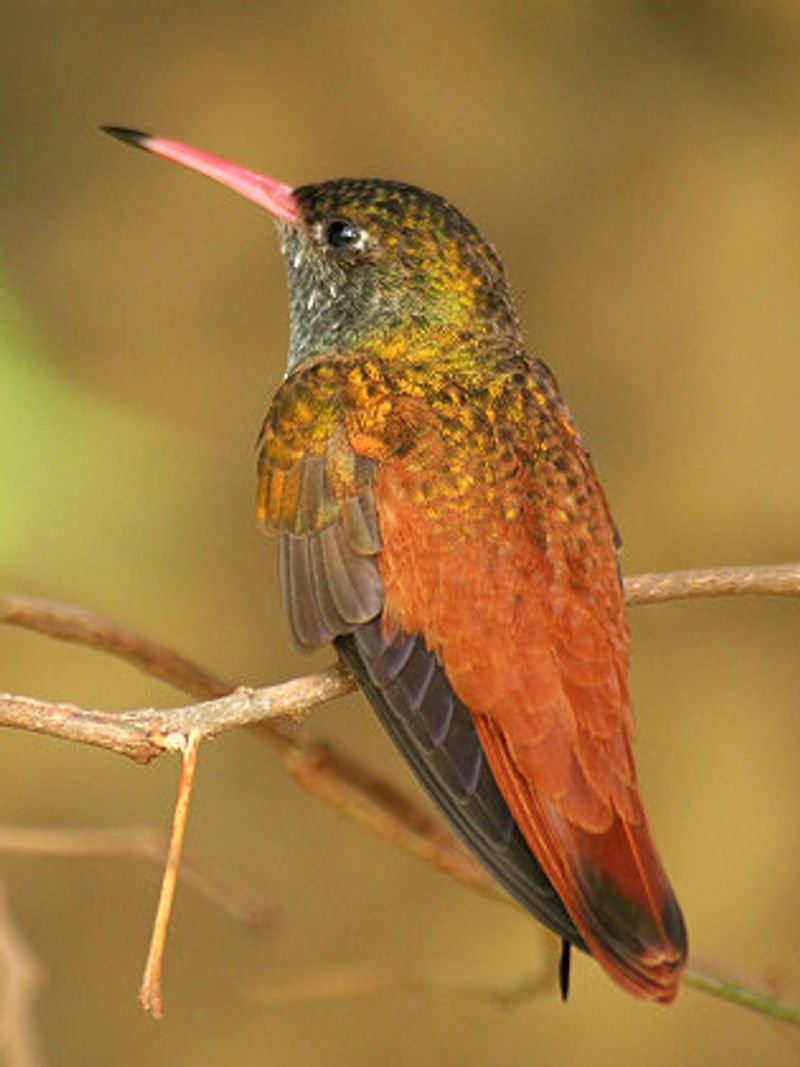
The Amazilia Hummingbird is a species of hummingbird belonging to the Trochilini tribe of the Trochilinae subfamily. It is the only species in the genus Amazilis and is native to Ecuador and Peru.
The species is made up of six subspecies, which differ mainly in terms of the colors of their throat and belly. Each subspecies has a unique combination of hues, ranging from vibrant blues and greens to more muted shades of brown and gray.
The feathers of the Amazilia Hummingbird are also known for their iridescent quality, which makes them appear to sparkle in the light.
They are found in a variety of habitats, including open woodlands, shrublands, and grasslands, where they feed on the nectar of flowers and catch insects on the wing.
| Kingdom | Animalia |
| Phylum | Chordata |
| Class | Aves |
| Clade | Strisores |
| Order | Apodiformes |
| Family | Trochilidae |
| Genus | Amazilis |
| Species | A. amazilia |
3. Waved Albatross

The waved albatross, also known as the Galapagos albatross, is a species of bird belonging to the Diomedeidae family. It is one of three species of the family that can be found in the tropical regions of the world.
These majestic birds can be seen gliding gracefully over the oceans, and they have a unique behavior when they forage for food. They travel in a straight line to a single site off the coast of Peru, located around 1,000 kilometers to the east.
This is a remarkable feat, as they are able to navigate precisely over such a large distance. It is believed that this ability is due to their strong sense of smell and their sensitive vision.
They can detect small changes in the water and air currents, allowing them to find their way back to the same site even after long journeys. The waved albatross is an impressive creature, and its ability to navigate such long distances is an amazing feat.
| Kingdom | Animalia |
| Phylum | Chordata |
| Class | Aves |
| Order | Procellariiformes |
| Family | Diomedeidae |
| Genus | Phoebastria |
| Species | P. irrorata |
4. Northern Giant Petrel
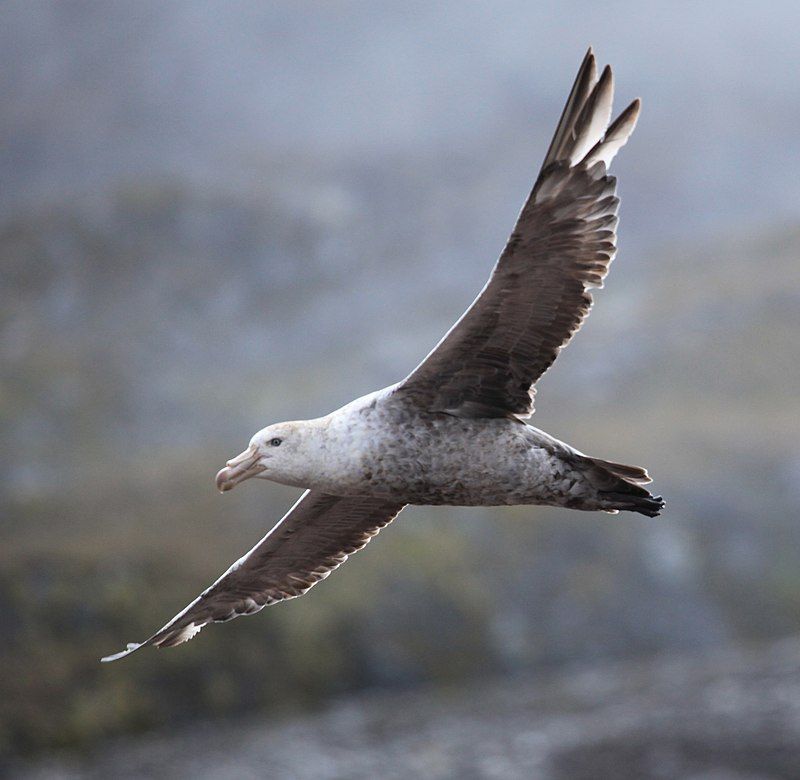
The northern giant petrel is a large seabird that can be found in the southern oceans. It is often referred to as Hall’s giant petrel and is a predatory species. Its range overlaps with that of the southern giant petrel, although it is located slightly further north.
The northern giant petrel typically inhabits areas ranging from the Antarctic Ocean, the Southern Ocean, and the Indian Ocean, up to parts of the South Atlantic. It is a large bird, with a wingspan of up to 2 meters and a body length of up to 80 cm.
It has a grey head, white neck, and a blackish back and wings. As a predatory species, the northern giant petrel mainly feeds on fish, squid, and crustaceans. It also scavenges for carrion, and sometimes even preys on other seabirds and their eggs.
This species is classified as Near Threatened on the IUCN Red List, due to its decreasing population and limited range. Conservation efforts are needed to protect this species and ensure its continued survival.
| Kingdom | Animalia |
| Phylum | Chordata |
| Class | Aves |
| Order | Procellariiformes |
| Family | Procellariidae |
| Genus | Macronectes |
| Species | M. halli |
5. South Polar Skua
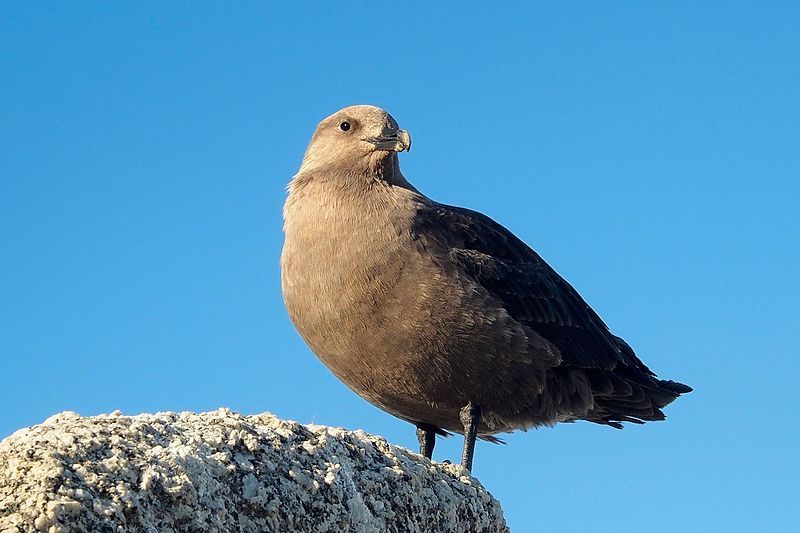
The south polar skua is a large seabird belonging to the skua family, Stercorariidae. This species of seabird is sometimes referred to as MacCormick’s skua, named after Robert McCormick, a naval surgeon and explorer who first collected its type specimen.
Robert McCormick was an important figure in the nineteenth century, traveling and exploring the Antarctic region. He was the first to discover the south polar skua, and his discovery was documented in the type specimen.
The type specimen is an example of the species used to identify and describe a species for scientific purposes. The type specimen of the south polar skua was collected by Robert McCormick and is now kept in collections of museums and research institutions.
As a result, his name was used to name the species, honoring his discovery and contribution to the scientific community.
| Kingdom | Animalia |
| Phylum | Chordata |
| Class | Aves |
| Order | Charadriiformes |
| Family | Stercorariidae |
| Genus | Stercorarius |
| Species | S. maccormicki |
6. Black-necked Woodpecker
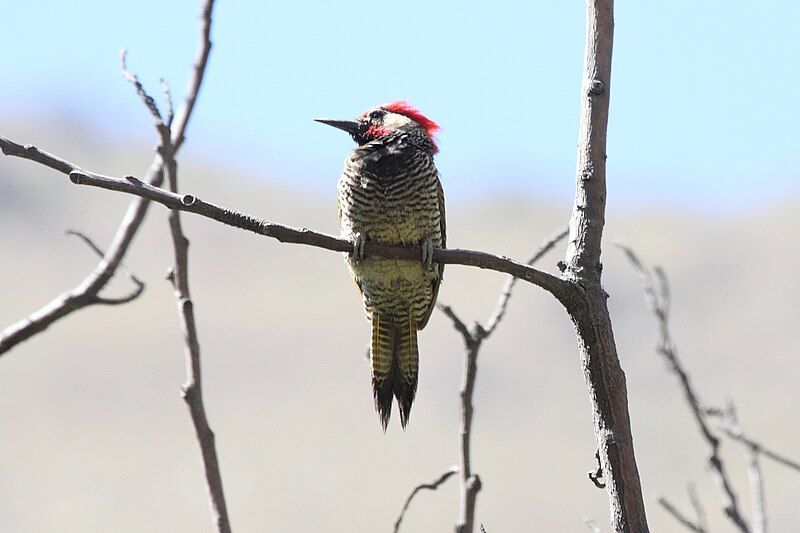
The black-necked woodpecker, or black-necked flicker, is a species of bird that is a part of the Picinae subfamily of the woodpecker family, Picidae. This species of bird is only found in Peru, which means that it is endemic to this region.
These woodpeckers have a black neck and back, and a white belly. The wings and tail are black, and their beak is yellow with a black tip. They are small birds, typically measuring between 6 and 7 inches in length, with a wingspan that is around 11 inches.
They feed mostly on insects and spiders, which they catch by using their beaks to peck at tree bark. They also eat fruit, seeds, and even some plant matter. They build their nests in dead trees, and they use their beaks to drill into the wood to make cavities.
They will often use the same cavity over and over again. Black-necked woodpeckers are solitary birds, and they may only come together in the breeding season.
They are considered to be a species of least concern by the International Union for Conservation of Nature, as their population is stable and they are not threatened by habitat loss.
| Kingdom | Animalia |
| Phylum | Chordata |
| Class | Aves |
| Order | Piciformes |
| Family | Picidae |
| Genus | Colaptes |
| Species | C. atricollis |
7. White-bellied Cinclodes
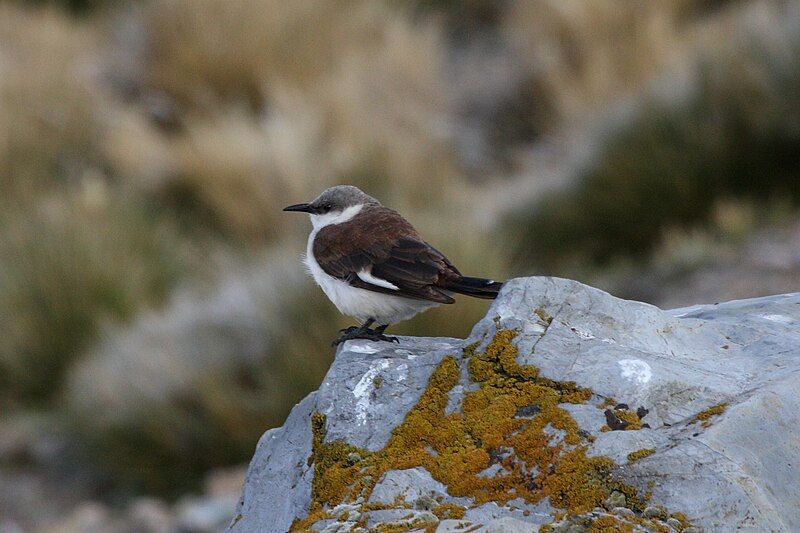
The white-bellied cinclodes is an amazing species of bird that belongs to the ovenbird family, Furnariidae. It is found exclusively in Peru, where it inhabits high-level, marshy grassland in the Junín Region and possibly also in the Huancavelica Region.
This species of bird is quite large, with dark upper parts that contrast strongly with its gleaming white underparts.
It is a very striking bird that can be easily identified in its natural habitat. The white-bellied cinclodes can be found in the marshy grassland of the Junín Region of Peru, where it prefers to inhabit the higher levels of the area.
It may also be present in the Huancavelica Region, although this is not yet confirmed. The bird feeds on insects and other small invertebrates, as well as some plant material.
It is a ground-dwelling species, so it is often seen foraging on the ground. The white-bellied cinclodes is classified as a vulnerable species due to its restricted range and the loss of its habitat.
As a result, conservation efforts are being made to protect this species and its habitat. This includes creating protected areas to ensure that the bird has adequate space to forage and breed safely.
Additionally, research is being done to better understand the species’ ecology and its needs in order to better conserve it.
| Kingdom | Animalia |
| Phylum | Chordata |
| Class | Aves |
| Order | Passeriformes |
| Family | Furnariidae |
| Genus | Cinclodes |
| Species | C. palliatus |
8. West Peruvian Dove
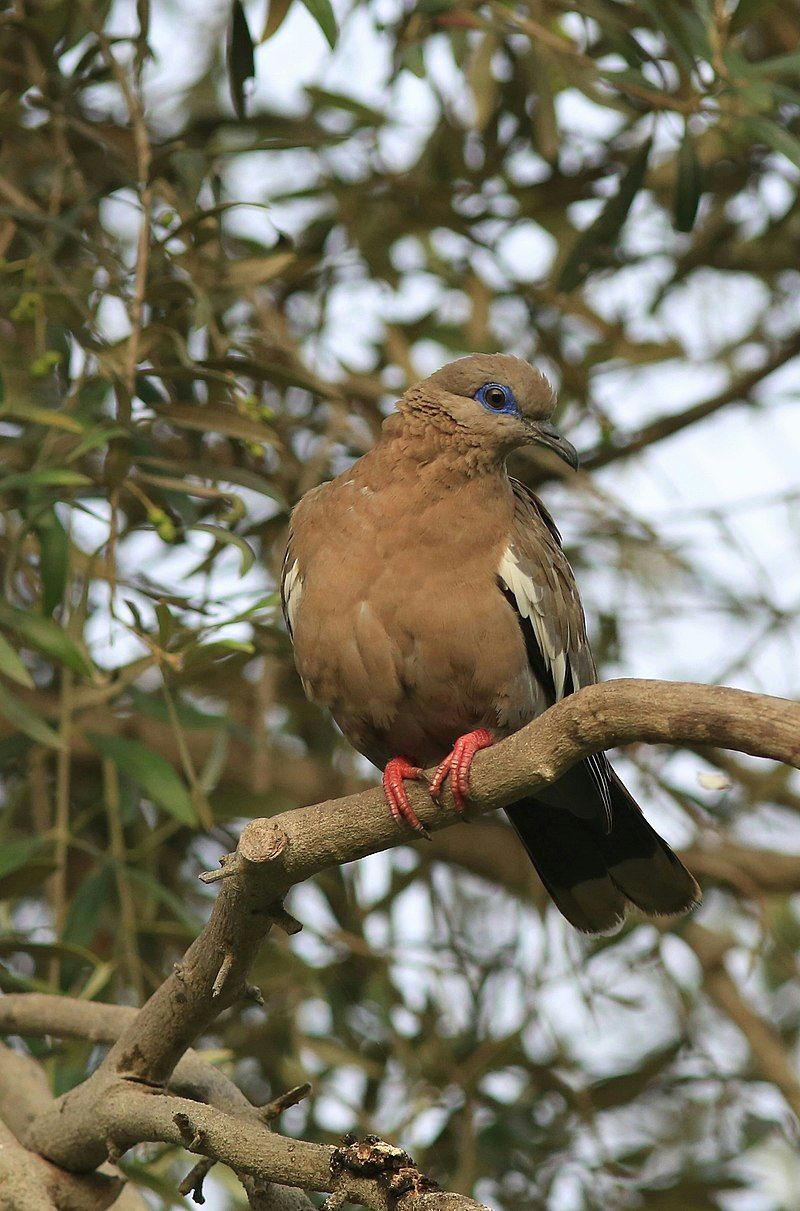
The West Peruvian Dove, also known as the Pacific Dove, is a species of bird in the genus Zenaida. It is a small to medium-sized dove, typically measuring between 11 and 12 inches in length. Its plumage is mostly grey-brown in color, with darker wings and tail.
Its underparts are grey-white. The West Peruvian Dove is native to the western and central coastal regions of Peru, as well as in central Peru. It is usually found in dry, thorny, scrubby areas and is often seen in dry grasslands.
It feeds mainly on seeds and other plant material. The West Peruvian Dove is a solitary species, usually seen alone or in pairs. It is generally not social, preferring to move about alone. It is not migratory but may move short distances in search of food.
The West Peruvian Dove is listed as a species of least concern by the International Union for Conservation of Nature due to its wide range and stable population.
| Kingdom | Animalia |
| Phylum | Chordata |
| Class | Aves |
| Order | Columbiformes |
| Family | Columbidae |
| Genus | Zenaida |
| Species | Z. meloda |
9. Collared Warbling Finch
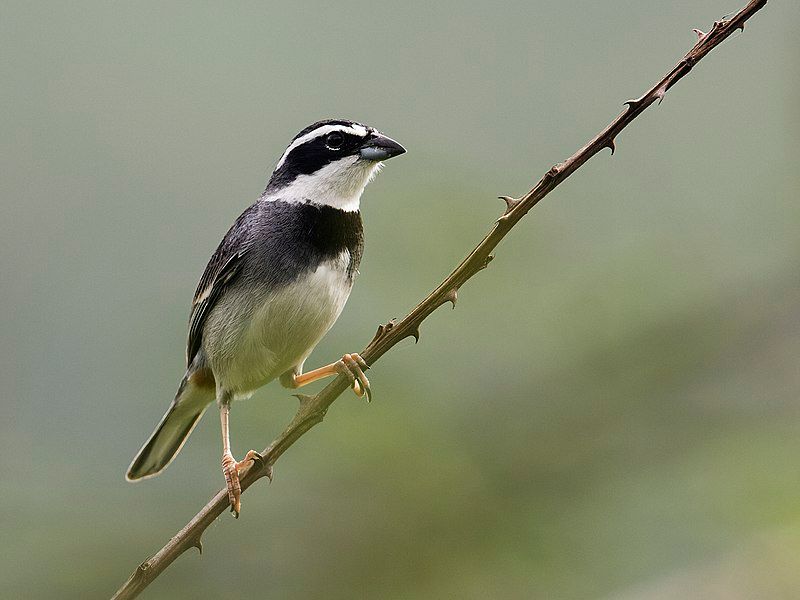
The Collared Warbling Finch is a type of bird that is part of the Thraupidae family. This species is native to the countries of Ecuador and Peru.
Its habitats tend to include arid and dry shrublands, moist shrublands, and high-altitude shrublands, and it can also be found in areas that were formerly forests but have since been heavily degraded.
These birds can be found in a variety of different climates and habitats, which is likely why they have been able to survive and thrive. The Collared Warbling Finch is an important species in the region, as it plays an important role in the local ecology and food chain.
| Kingdom | Animalia |
| Phylum | Chordata |
| Class | Aves |
| Order | Passeriformes |
| Family | Thraupidae |
| Genus | Poospiza |
| Species | P. hispaniolensis |
10. White-winged Parakeet
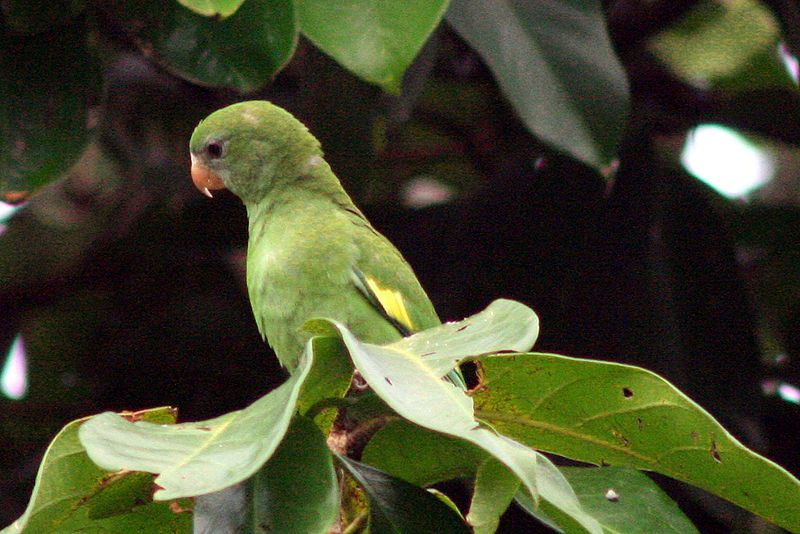
The white-winged parakeet, also known as the canary-winged parakeet, is a species of small parrot native to the Amazon River basin.
This parrot is found in a wide range of habitats, ranging from the wetland forests of southeast Colombia to the tropical rainforests of Brazil, where the Amazon River empties into the Atlantic Ocean.
These parakeets are usually found in large flocks and are known for their vibrant colors and social behavior. They are also popular as pets and are kept in captivity in many countries around the world.
The white-winged parakeet has a green body with a yellow head and an orange beak. The wings are white with black stripes and the tail is green with yellow markings. They are typically around 10 inches in length and weigh about 3.5 ounces.
These parakeets are omnivores, meaning they eat both plant material and small animals such as insects. They mainly feed on fruits, nuts, and seeds found in the Amazonian forests.
In addition, they will opportunistically take advantage of food sources provided by humans, such as bird feeders. White-winged parakeets are highly sociable and form large flocks.
They are known for their loud screeching calls and will often join together to produce a chorus of sound. They are also known to engage in playful behavior, such as chasing each other through the air and chasing after food sources.
In the wild, these parakeets form strong bonds with their mates and will often remain with the same partner for life. The white-winged parakeet is a species of conservation concern, as their numbers have been declining in recent years.
This is due to habitat destruction, illegal trapping for the pet trade, and competition with introduced species. In response, many countries have put in place laws to protect these birds and their habitats.
| Kingdom | Animalia |
| Phylum | Chordata |
| Class | Aves |
| Order | Psittaciformes |
| Family | Psittacidae |
| Genus | Brotogeris |
| Species | B. versicolurus |
11. Pacific Parrotlet
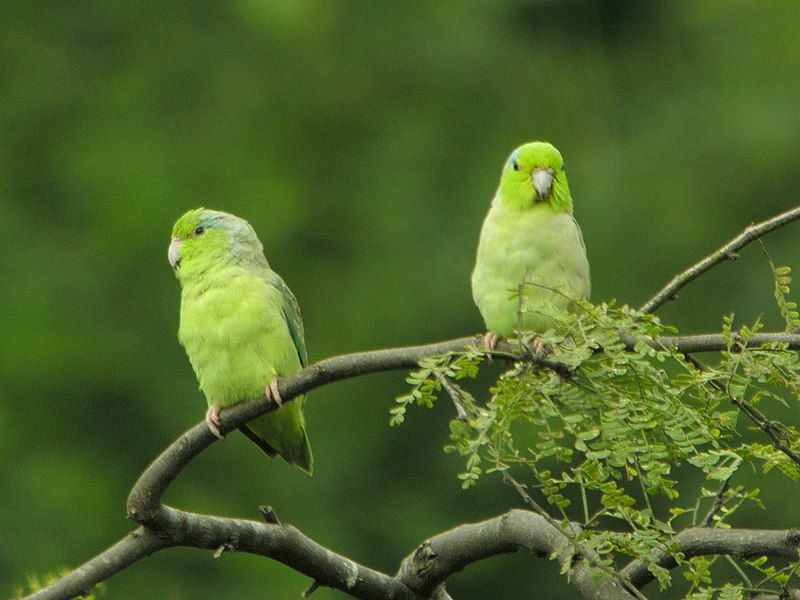
The Pacific parrotlet is a species of small parrot that is found in the family Psittacidae. It is also referred to as Lesson’s parrotlet or the celestial parrotlet. This species of parrot is native to humid, subtropical, and tropical regions of South and Central America.
They are mostly found in the coastal areas of the Pacific Ocean. Pacific parrotlets have a vibrant green to olive-green coloration, with yellow or blue accents on the wings and tail. They are one of the smallest parrots in the world, measuring only about 5-7 inches in length.
They have a moderate to long lifespan of about 15-20 years. Pacific parrotlets are social birds and can live in pairs or small flocks. They are active, playful, and love to explore their environment. They can be territorial and are known to be noisy.
They are also known to be good learners and can be taught to talk. Pacific parrotlets require a large cage and lots of toys for mental stimulation. They also need a varied diet of seeds, fruits, vegetables, and nuts.
They are prone to health problems such as Psittacine beak and feather disease and should be kept on a regular health checkup schedule.
| Kingdom | Animalia |
| Phylum | Chordata |
| Class | Aves |
| Order | Psittaciformes |
| Family | Psittacidae |
| Genus | Forpus |
| Species | F. coelestis |
12. Pacific Pygmy Owl
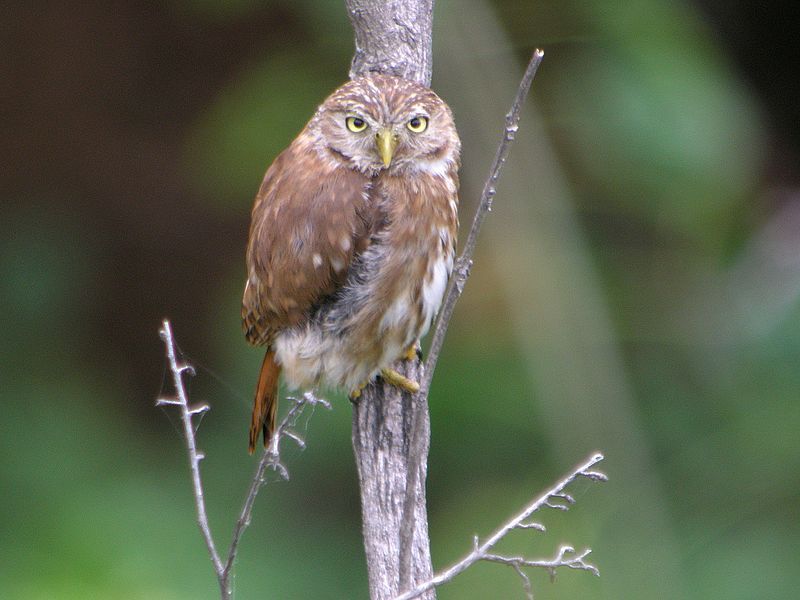
The Pacific pygmy owl, also known as the Peruvian pygmy owl, is a small owl found in Chile, Ecuador, and Peru. It is a member of the subfamily Surniinae, which is part of the family Strigidae, or the “typical owls”.
Pacific pygmy owls are typically between 10-14 cm in length and have a wingspan of 25-30 cm. They have large eyes, a round head, and a short tail. The owls are typically brownish-gray in color, with a white facial disk and a white throat.
They have two black stripes above their eyes and a black stripe along their back. The Pacific pygmy owl is a nocturnal bird and is usually seen perched on a low branch in the early morning or late evening.
It feeds mainly on small insects, such as beetles, grasshoppers, and moths, as well as small birds, lizards, and rodents. It is an important predator in the area where it lives, helping to maintain a balance in the local ecosystem.
| Kingdom | Animalia |
| Phylum | Chordata |
| Class | Aves |
| Order | Strigiformes |
| Family | Strigidae |
| Genus | Glaucidium |
| Species | G. peruanum |
13. Tropical Kingbird
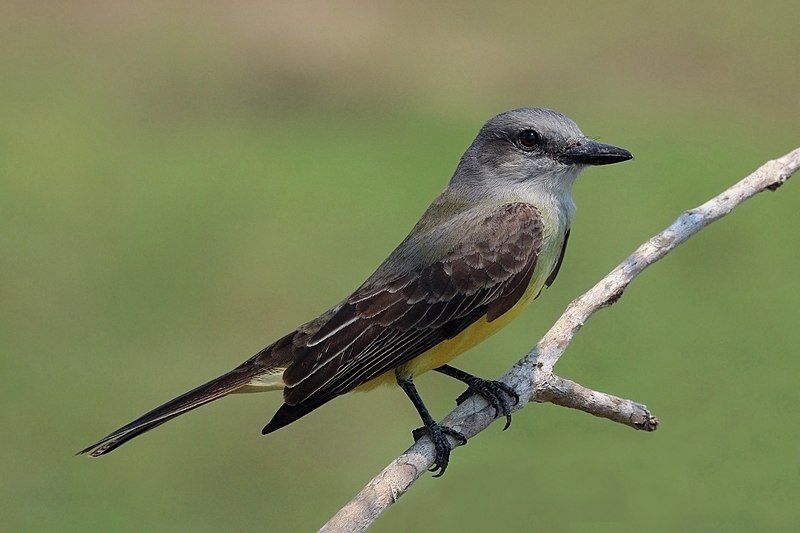
The tropical kingbird is a species of tyrant flycatcher, a family of birds known for their large size and wide wingspan.
They are found throughout Central and South America, with their range stretching from southern Arizona and the lower Rio Grande Valley of Texas in the United States, all the way down to central Argentina and eastern Peru.
They have also been spotted on the Caribbean island of Trinidad and Tobago. These birds are most commonly seen in open woodlands, savannas, and grasslands.
They are known for their territorial behavior, aggressively defending their nesting areas from predators and other kingbirds.
During the breeding season, they build nests high up in trees, where they can raise their young in relative safety.In terms of diet, tropical kingbirds are insectivorous, feeding on a variety of flying insects including flies, moths, and beetles.
They are also known to eat fruits and berries, making them a welcome sight in many backyards and parks where they can help control insect pests. The tropical kingbird is a beautiful species.
They have a distinct black and yellow plumage, with a white underside and distinctive red crown. They are an important part of the ecosystem in their range, providing food for other species and helping to control insect populations.
| Kingdom | Animalia |
| Phylum | Chordata |
| Class | Aves |
| Order | Passeriformes |
| Family | Tyrannidae |
| Genus | Tyrannus |
| Species | T. melancholicus |
14. Croaking Ground Dove
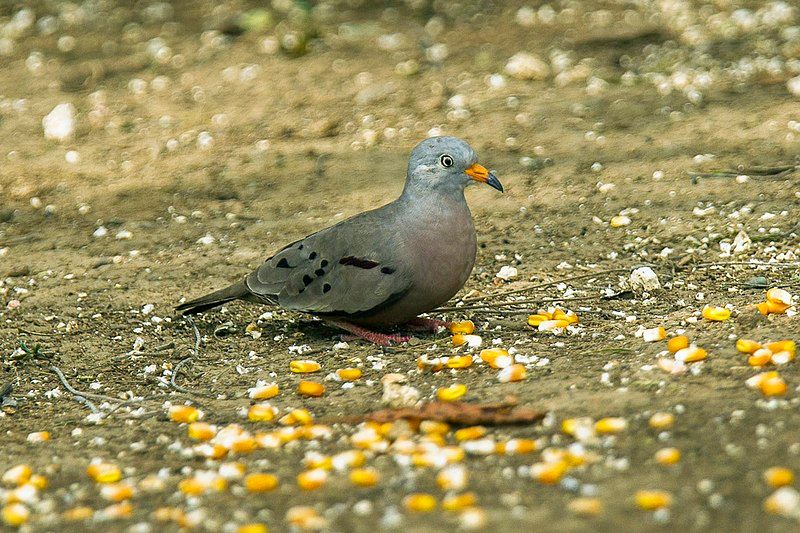
The Croaking Ground-Dove is a species of bird belonging to the Columbidae family, which includes all doves and pigeons. This bird is native to parts of South America, particularly Chile, Colombia, Ecuador, and Peru.
The Croaking Ground-Dove is a medium-sized bird with a length of around 20-25 centimeters. Its plumage is mainly grayish-brown in color, with a white patch on its throat and a white line on its wings. It has a reddish-brown iris and a yellowish bill.
The Croaking Ground Dove’s diet mainly consists of seeds, fruits, and insects. It is found in open areas, such as pastures, fields, and open woodlands. It is usually seen in pairs or small flocks and it has a distinctive call, which is a loud, croaking sound.
The Croaking Ground-Dove is not considered to be threatened in its natural environment. It is listed as a species of Least Concern on the IUCN Red List of Threatened Species. This is due to its wide range and large population.
However, the species is still vulnerable to habitat loss and fragmentation due to human activities.
| Kingdom | Animalia |
| Phylum | Chordata |
| Class | Aves |
| Order | Columbiformes |
| Family | Columbidae |
| Genus | Columbina |
| Species | C. cruziana |
15. Belcher’s Gull

Belcher’s gull is a species of bird that belongs to the family Laridae. It is native to the Pacific coast of South America and is commonly referred to as the band-tailed gull.
In the past, Olrog’s gull was thought to be a subspecies of Belcher’s gull, but it is now accepted as a separate species, known as Larus atlanticus. Olrog’s gull is found on the Atlantic coast of South America.
Belcher’s gull is slightly larger than Olrog’s gull, and its tail is more deeply forked. Its plumage is mainly grey, with black markings on its wings and tail. It has a yellow bill and yellow legs. It feeds on fish, crustaceans, and other aquatic invertebrates.
Breeding takes place during the austral spring and summer when the birds form large colonies on rocky islands and reefs along the coast.
| Kingdom | Animalia |
| Phylum | Chordata |
| Class | Aves |
| Order | Charadriiformes |
| Family | Laridae |
| Genus | Larus |
| Species | L. belcheri |
16. Peruvian Thick-knee
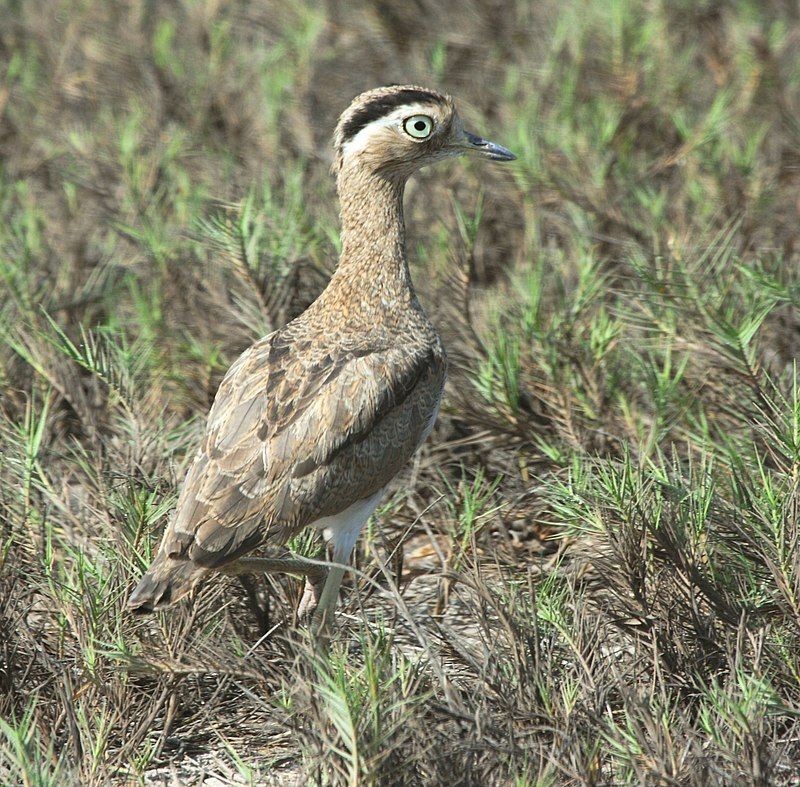
The Peruvian thick-knee is a species of bird found in the family Burhinidae.
It is natively located in Chile, Ecuador, and Peru, and it prefers to inhabit subtropical or tropical dry shrubland, subtropical or tropical seasonally wet or flooded lowland grassland, and pastureland habitats.
This bird is a ground-dweller, preferring to live in open areas with some cover provided by shrubs or grasses. The Peruvian thick-knee is a medium-sized bird, measuring between 25 to 32 cm in length. It has a large head with a long curved bill, as well as strong legs and feet.
Its plumage is mainly grey, with some black and white markings. The Peruvian thick-knee is a solitary bird, mainly active during the day. It feeds mainly on small invertebrates, as well as some seeds and plants.
It is also known to take advantage of agricultural land and gardens. The Peruvian thick-knee is an important species for maintaining the balance in its natural habitats.
It helps to control populations of small invertebrates, which, if left unchecked, could have a negative impact on the plant life in the region.
This species is also important to local farmers, as it can help to reduce crop damage. The Peruvian thick-knee is listed as a species of least concern on the IUCN Red List.
However, its population is decreasing due to a variety of factors, including habitat destruction, hunting, and predation by domestic cats and dogs. Conservation efforts are needed to ensure the long-term survival of this species.
| Kingdom | Animalia |
| Phylum | Chordata |
| Class | Aves |
| Order | Charadriiformes |
| Family | Burhinidae |
| Genus | Burhinus |
| Species | B. superciliaris |
17. Groove-billed Ani
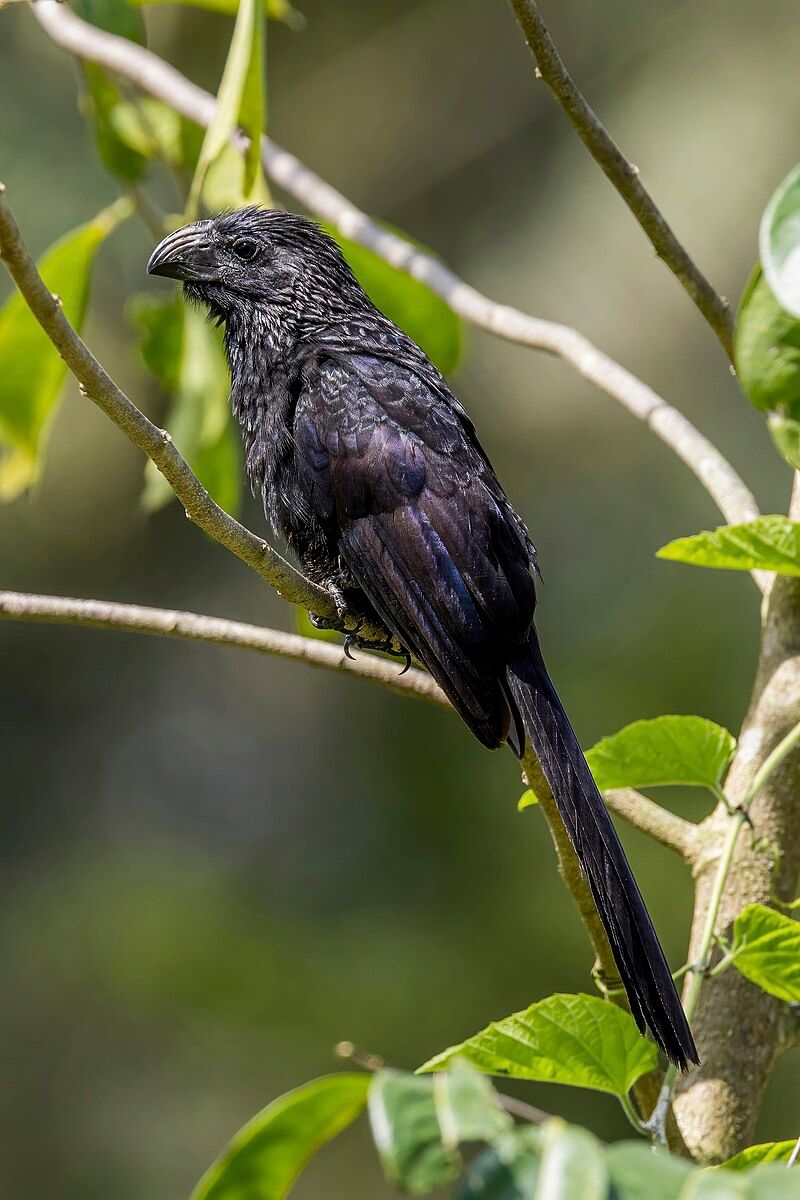
The groove-billed ani is a tropical bird species from the cuckoo family, characterized by its long tail and large, curved beak.
It has a large range that spans across several countries in the Americas, ranging from southern Texas in the United States, all the way to coastal Ecuador and Peru.
It is considered to be a resident species throughout its entire range, meaning that it breeds and lives in the same place year-round. In Mexico, it is found in central regions, while in the Bahamas it is an occasional visitor.
In South America, its range extends from northern Colombia and Venezuela to coastal Ecuador and Peru. The groove-billed ani is an omnivorous species, and its diet consists mainly of fruits, berries, insects, and other small animals.
It lives in a variety of habitats, such as forests, woodlands, and scrublands. It is a social species and is often seen in small flocks. It is generally not considered to be a threatened species, and its population is considered to be stable throughout its range.
| Kingdom | Animalia |
| Phylum | Chordata |
| Class | Aves |
| Order | Cuculiformes |
| Family | Cuculidae |
| Genus | Crotophaga |
| Species | C. sulcirostris |
18. Peruvian Booby
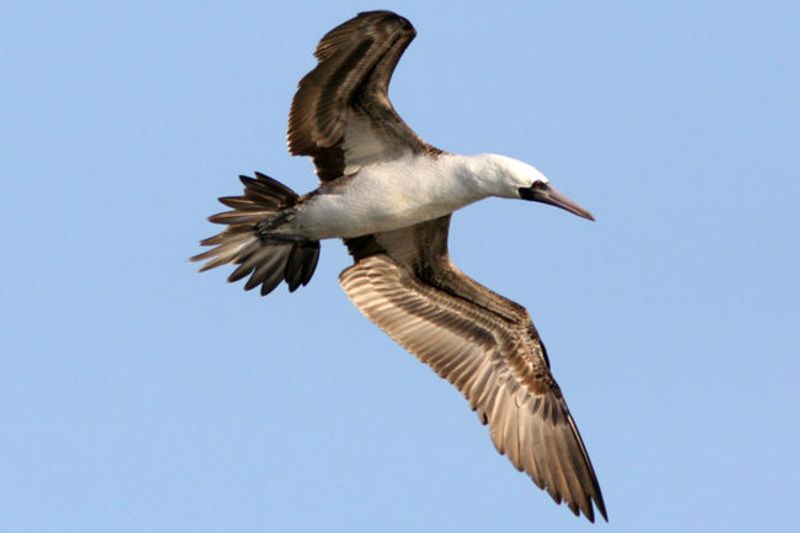
The Peruvian booby is a species of seabird that is native to the waters of the Peruvian Current. It is a top predator within the marine ecosystem and plays an important role in maintaining a healthy balance in the food web.
The Peruvian booby is not as widely distributed as other species of booby birds and is found only in the waters of the Peruvian current. This is likely due to its specialized diet and the unique environment of the region.
The Peruvian booby has a large wingspan and is able to dive deep into the ocean to feed on small fish and squid. It is also an important prey species for larger predators, such as dolphins, seals, and sharks.
The presence of the Peruvian booby is a key indicator of a healthy marine ecosystem. Without it, the balance of the food web would be altered and other species of marine life would suffer as a result.
| Kingdom | Animalia |
| Phylum | Chordata |
| Class | Aves |
| Order | Suliformes |
| Family | Sulidae |
| Genus | Sula |
| Species | S. variegata |
19. Southern Beardless Tyrannulet
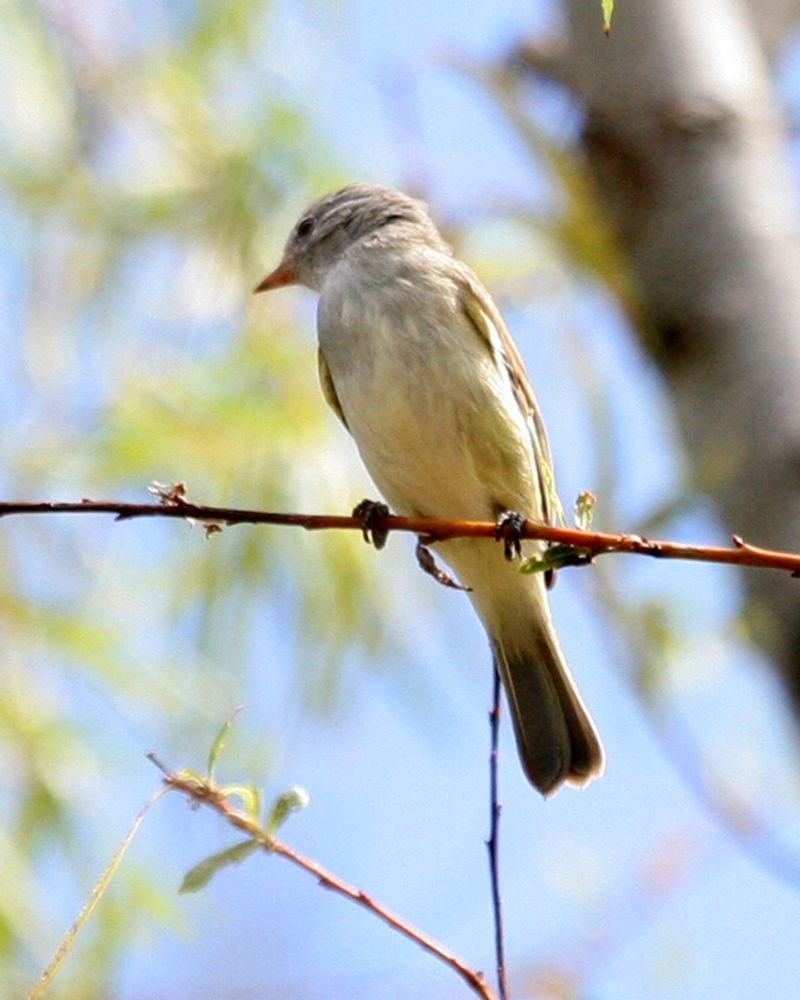
The southern beardless tyrannulet is a species of small passerine bird that belongs to the tyrant flycatcher family. This species of bird is found throughout Central and South America, ranging from Costa Rica all the way down to Argentina.
Its natural habitat consists of subtropical or tropical dry forests, dry savanna, and moist savanna. This species of bird is usually small in size, usually ranging from 10–11 cm in length, and is mainly gray in color, with a yellowish or olive breast and throat.
The southern beardless tyrannulet has a distinct call, consisting of a loud “peep” or “tsit”. These birds feed mainly on small insects, foraging for food on the ground or in trees. They also feed on fruit, seeds, and nectar.
The southern beardless tyrannulet is typically found in pairs or small family groups and is known for its active and inquisitive behavior. They are also known for their social behavior, often gathering in large flocks in areas where food is plentiful.
The southern beardless tyrannulet is an important species in its natural habitat, as it helps to control insect populations and disperses the seeds of fruit-bearing trees, which helps to promote the growth of new vegetation.
| Kingdom | Animalia |
| Phylum | Chordata |
| Class | Aves |
| Order | Passeriformes |
| Family | Tyrannidae |
| Genus | Camptostoma |
| Species | C. obsoletum |
20. Sparkling Violetear
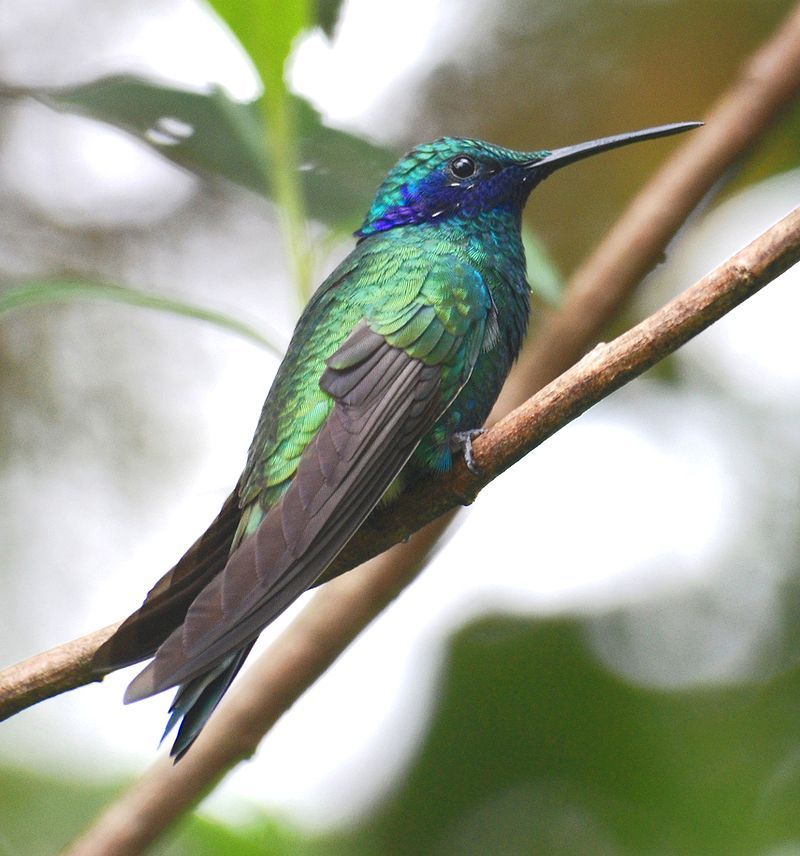
The sparkling violetear is an incredibly unique species of hummingbird that is found in a wide range of locations.
It is native to the highland regions of northern and western South America, including a large area of the Andes mountain range, the Venezuelan Coastal Range, and the Tepuis.
This bird is particularly special due to its iridescent purple feathers, which can be seen sparkling in the sunlight. Its ability to thrive in the mountainous regions of South America is also remarkable, as it is able to adapt to the changing climate in these areas.
The sparkling violetear is a species that is highly appreciated for its unique beauty and its hardiness in its natural habitat.
| Kingdom | Animalia |
| Phylum | Chordata |
| Class | Aves |
| Clade | Strisores |
| Order | Apodiformes |
| Family | Trochilidae |
| Genus | Colibri |
| Species | C. coruscans |
21. Oasis Hummingbird
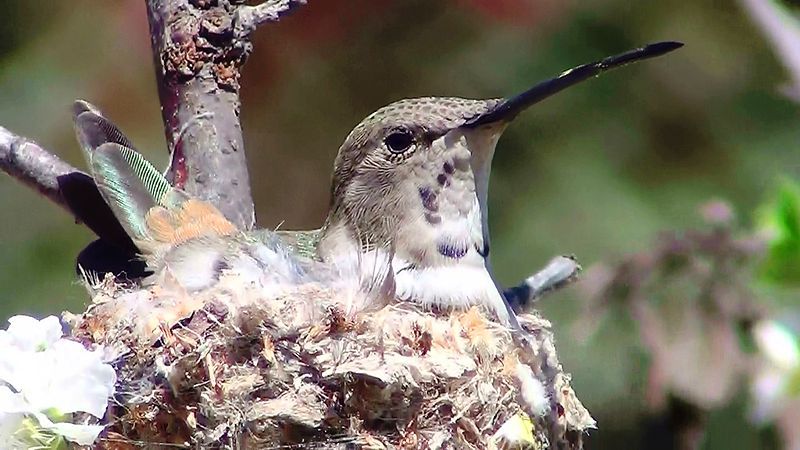
The Oasis Hummingbird is an incredibly unique species of bird. It is part of the family Trochilinae, also known as the “Bee Hummingbirds,” and is the only species in the genus Rhodopis.
This species of hummingbird is native to both Chile and Peru and is known for its small size, which is only around 2.7 inches long. It has a relatively short, curved bill and a white chest with some gray spots.
The Oasis Hummingbird is mostly found in dry shrublands and deserts where it feeds on insects and nectar from flowers. It is an active bird, often seen hovering near flowers as it collects nectar.
This species of hummingbird is considered to be of least concern due to its wide range and stable population.
| Kingdom | Animalia |
| Phylum | Chordata |
| Class | Aves |
| Clade | Strisores |
| Order | Apodiformes |
| Family | Trochilidae |
| Genus | Rhodopis |
| Species | R. vesper |
22. Grey Gull
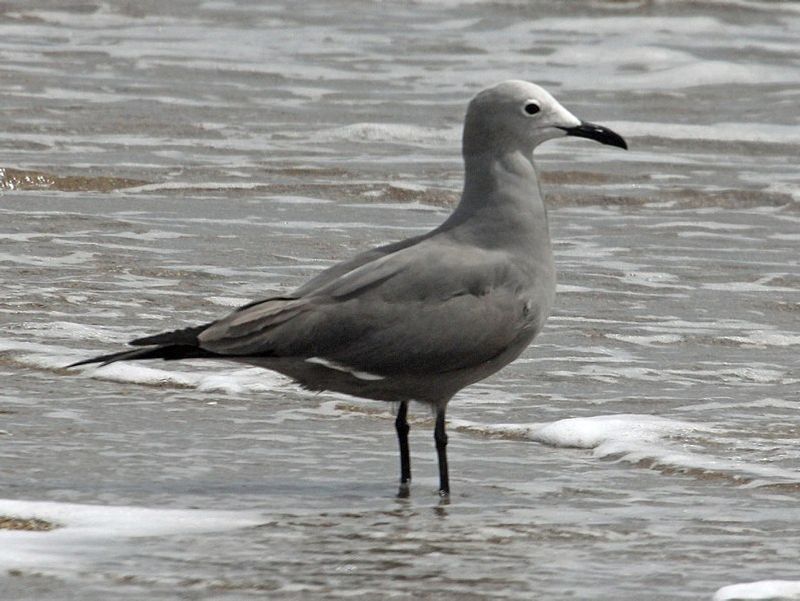
The Grey Gull, or Garuma Gull, is a medium-sized species of gull native to South America. It is uncommon among gulls for its habit of breeding in the arid and dry Atacama Desert in northern Chile, where few other species can survive.
Aside from this, the Grey Gull can also be found as a non-breeding bird along many parts of the Pacific coast of South America, although it is not as common as it is in the Atacama Desert. The Grey Gull is a relatively small bird, usually ranging from 20 to 25 centimeters in length.
Its feathers are a light grey in color, with the wings, head, and back of the neck having darker grey and black markings.
Its beak and legs are black, and its eyes are a bright yellow. The Grey Gull is an omnivore, so its diet consists of a variety of items, such as small fish, crustaceans, insects, and carrion.
It often scavenges for food around beaches, and can also be seen foraging for food in the desert. The Grey Gull breeds in the Atacama Desert during the summer months, usually laying two to three eggs at a time.
The young are fed by both parents and after fledging, they stay with the parents for about a month before they are able to fly away. The Grey Gull is an important species to the local ecology of South America, as it helps to control the population of insects and small fish.
It is also an important scavenger, as it helps to keep beaches and other areas clean.
| Kingdom | Animalia |
| Phylum | Chordata |
| Class | Aves |
| Order | Charadriiformes |
| Family | Laridae |
| Genus | Leucophaeus |
| Species | L. modestus |
23. Thick-billed Miner
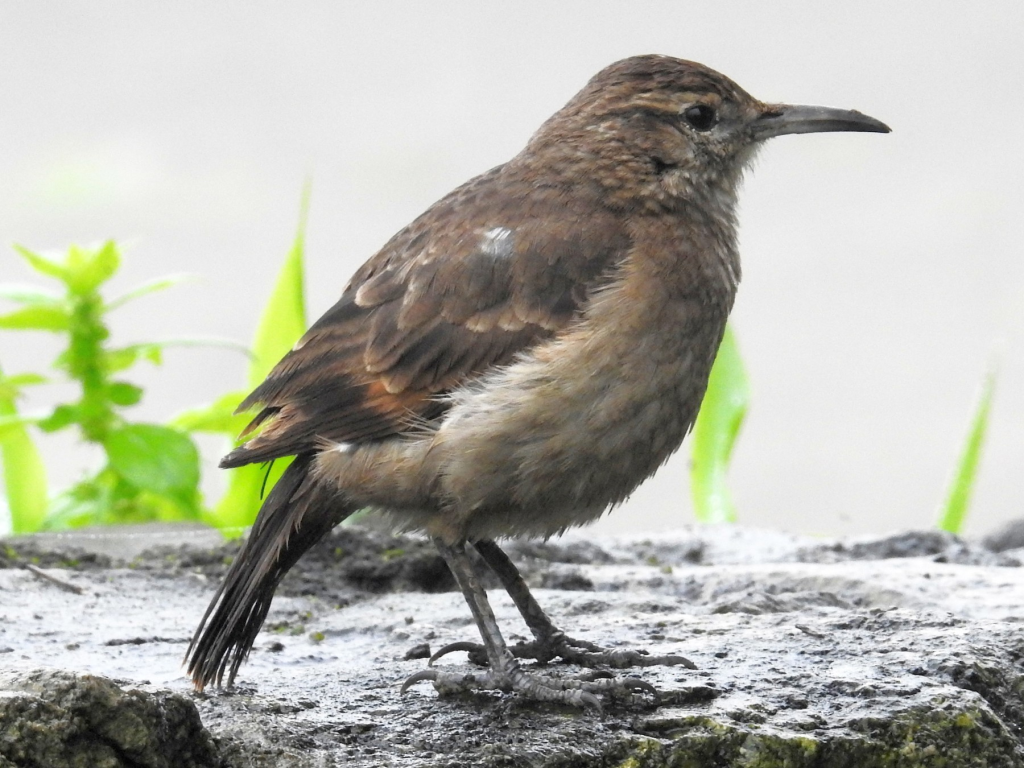
The thick-billed miner is a species of bird that is part of the subfamily Sclerurinae, specifically the leaf tossers and miners. This species of bird is part of the ovenbird family, Furnariidae.
It is native to Peru and is endemic to that country, meaning it is found nowhere else in the world. The thick-billed miner is a small bird with a short, thick bill. It has brown and white feathers on its upperparts and a white belly.
Its habitat consists of dry, shrubby hillsides and canyons in the intermontane valleys of the Andes Mountains. It feeds on insects and spiders, as well as occasionally seeds. The thick-billed miner is a social bird, often seen in small flocks.
It has a loud, distinctive call that is often heard in its range. Conservation efforts are currently in place to protect the species and its habitat.
| Kingdom | Animalia |
| Phylum | Chordata |
| Class | Aves |
| Order | Passeriformes |
| Family | Furnariidae |
| Genus | Geositta |
| Species | G. crassirostris |
24. Chilean Skua
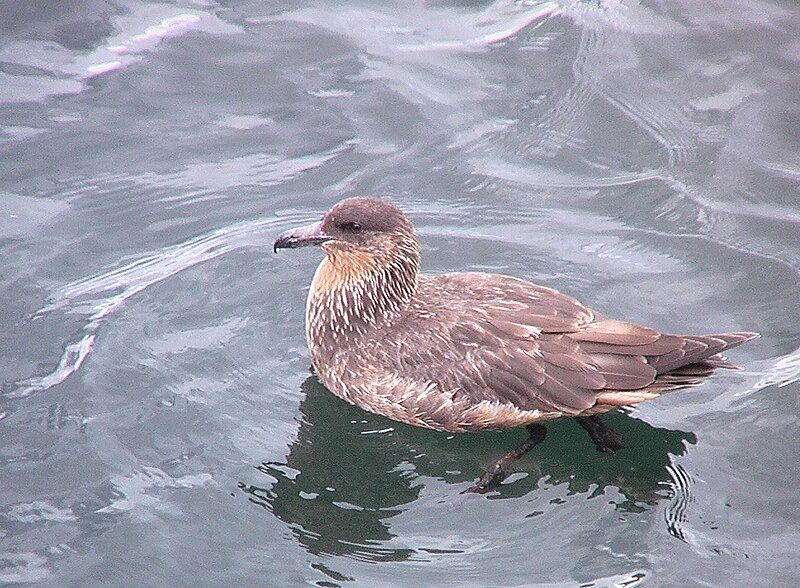
The Chilean skua is an impressive predatory seabird that has an impressive breeding range that stretches from Argentina and Chile to as far north as Brazil and Peru.
This powerful and distinctive bird is also known as the cinnamon skua due to its distinguishing feature of a dark cap on its head that contrasts with its cinnamon-colored throat and lower face.
Because of its range, the Chilean skua is able to take advantage of a variety of different habitats and prey sources, from coastal areas to inland rivers and lakes.
This bird is also known to be quite aggressive, often chasing and attacking other birds in order to protect its territory. In addition, the Chilean skua is also known to be a strong and powerful flier, capable of soaring to great heights and covering large distances.
These features combined make the Chilean skua a truly formidable bird of prey.
| Kingdom | Animalia |
| Phylum | Chordata |
| Class | Aves |
| Order | Charadriiformes |
| Family | Stercorariidae |
| Genus | Stercorarius |
| Species | S. chilensis |
25. Plain-breasted Ground Dove
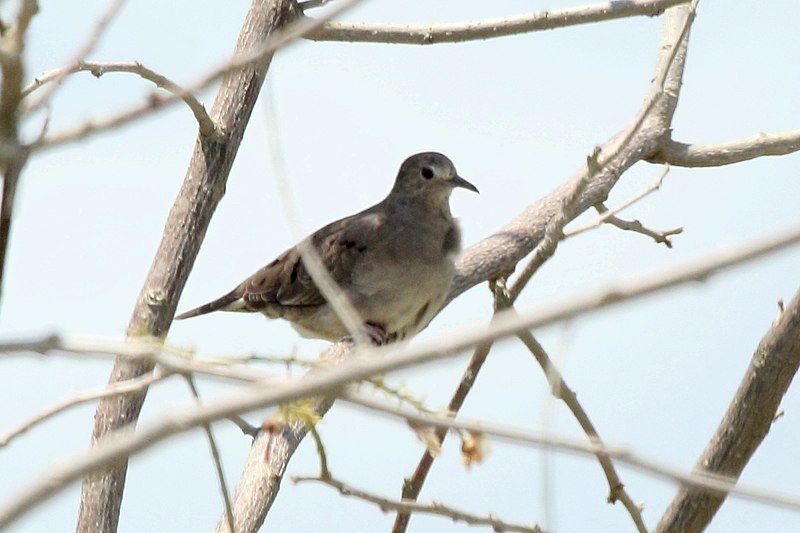
The plain-breasted ground dove is a species of bird that belongs to the Columbidae family. It is often mistaken for the common ground dove due to their similar appearance. However, the plain-breasted ground dove can be identified by its lack of scaled feathers.
In comparison, the common ground dove has a more scaled appearance to its feathers. Furthermore, the plain-breasted ground dove is usually less abundant than its common counterpart.
| Kingdom | Animalia |
| Phylum | Chordata |
| Class | Aves |
| Order | Columbiformes |
| Family | Columbidae |
| Genus | Columbina |
| Species | C. minuta |
26. Hooded Siskin
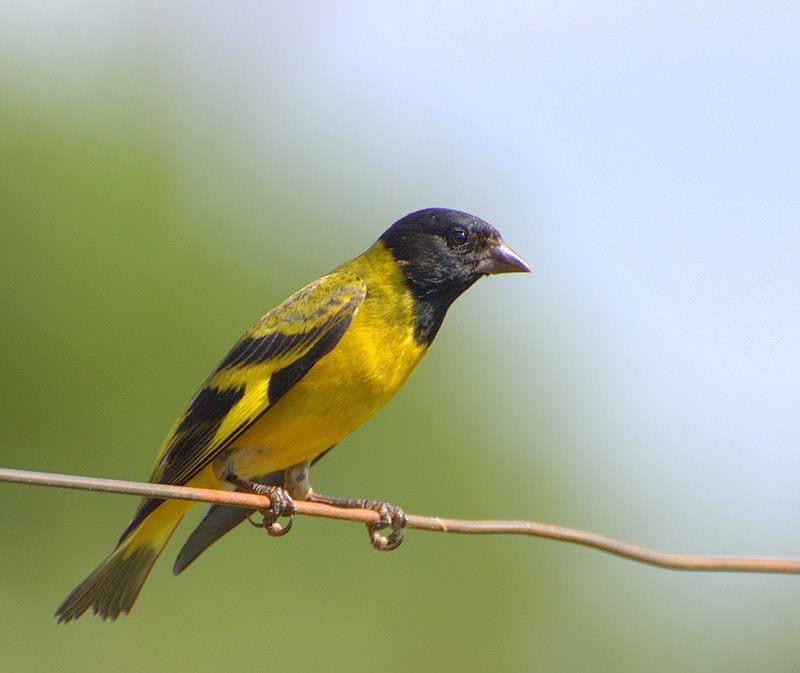
The hooded siskin is a species of bird belonging to the finch family. It is native to South America and is part of a larger clade of siskins that are found in the genus Spinus sensu lato.
This species consists of 11 distinct subspecies, one of which is the Santa Cruz hooded siskin. This particular subspecies is found in central and eastern Bolivia. The hooded siskin is a small bird with a length of around 12-13 cm.
Its plumage is mostly grey and yellow, with black wings and tail feathers. Its diet consists of various types of seeds, grains, and insects.
It is often seen visiting bird feeders in parks and gardens. The hooded siskin is not considered to be threatened and is listed as least concern by the IUCN. It is found in a variety of habitats including woodland, scrubland, and grassland.
It is known to form large flocks during the winter months when food is scarce. The hooded siskin is a popular cagebird in some parts of its range. Its melodious song and attractive colors make it an attractive pet.
It is also kept as an aviary bird and is often found in collections owned by bird enthusiasts.
| Kingdom | Animalia |
| Phylum | Chordata |
| Class | Aves |
| Order | Passeriformes |
| Family | Fringillidae |
| Genus | Spinus |
| Species | S. magellanicus |
27. Cinereous Conebill
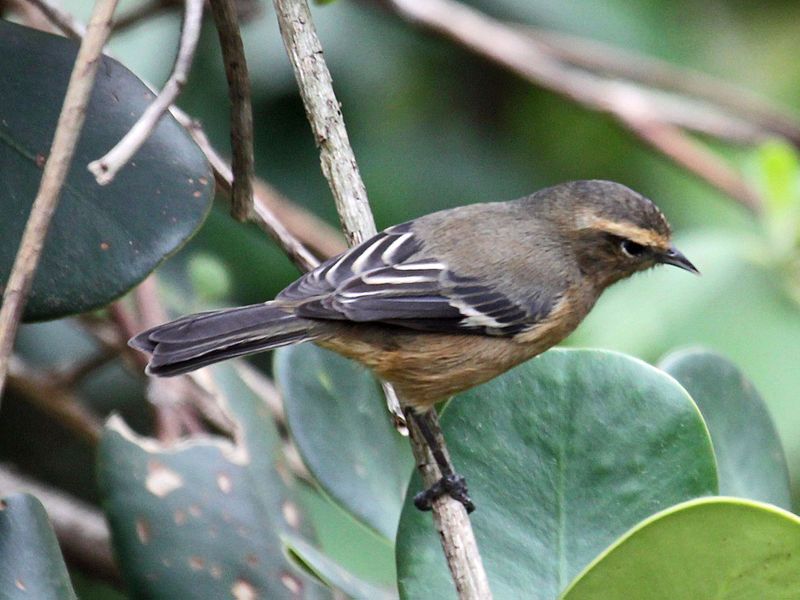
The cinereous conebill is a species of bird belonging to the tanager family Thraupidae. This particular species of bird is identified by its cinereous coloration, which is a shade of greyish-brown.
The cinereous conebill is native to a few South American countries such as Bolivia, Chile, Colombia, Ecuador, and Peru. It can mainly be observed in the evergreen forest and scrublands of these countries, in areas with abundant shrubbery and foliage.
The cinereous conebill is a small bird, measuring at around 12-13 cm in length. Its diet mainly consists of insects, spiders, and small fruits. It also has a characteristic call, which is a series of “chup” notes that are repeated at quick intervals.
The cinereous conebill is a beautiful species of bird that has an important role to play in the environment. Its presence helps promote the growth of trees and plants by its feeding activities. Furthermore, it plays a part in controlling the insect population through its diet.
Despite being a common species, the cinereous conebill is under threat due to deforestation and habitat loss. Conservation efforts are being taken to ensure that this species of bird is not lost forever.
| Kingdom | Animalia |
| Phylum | Chordata |
| Class | Aves |
| Order | Passeriformes |
| Family | Thraupidae |
| Genus | Conirostrum |
| Species | C. cinereum |
28. Chiguanco Thrush
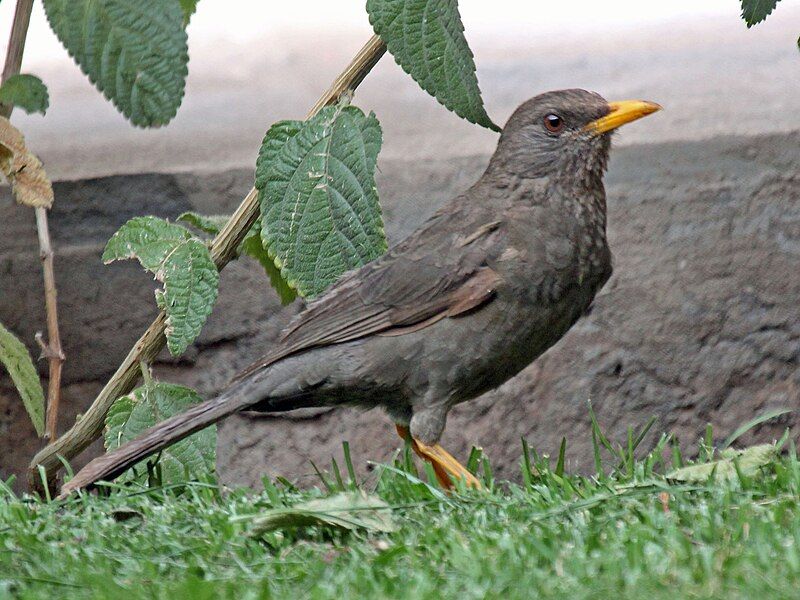
The Chiguanco thrush is a species of bird that belongs to the family Turdidae, which is commonly known as thrushes. It is found in two distinct habitats, the Ecuadorian subtropics and the Altiplano, which is a plateau in South America.
The Chiguanco thrush is typically found in shrubland and heavily degraded former forests, which are forests that have been significantly impacted by human activities such as logging and agricultural development. The shrubland habitat of the Chiguanco thrush is characterized by dense vegetation and is typically found in subtropical and tropical climates.
This type of habitat provides protection for the bird and is full of insects, fruits, and other foods that the Chiguanco thrush can feed on. The Altiplano habitat is a high-altitude plateau with a cooler climate than the shrubland.
Here the Chiguanco thrush can find a variety of foods such as seeds, insects, and fruits, which it can forage for in the sparse vegetation. The Chiguanco thrush is an important species in both of these habitats as it helps to maintain a balance in the ecosystem.
It feeds on a variety of insects, fruits, and seeds and also helps to spread the seeds of the plants it eats around the area, helping the plants to grow and spread.
By maintaining a balance in the ecosystem, the Chiguanco thrush helps to ensure that the habitat is healthy and can support a variety of species.
| Kingdom | Animalia |
| Phylum | Chordata |
| Class | Aves |
| Order | Passeriformes |
| Family | Turdidae |
| Genus | Turdus |
| Species | T. chiguanco |
29. Rusty-crowned tit-spinetail
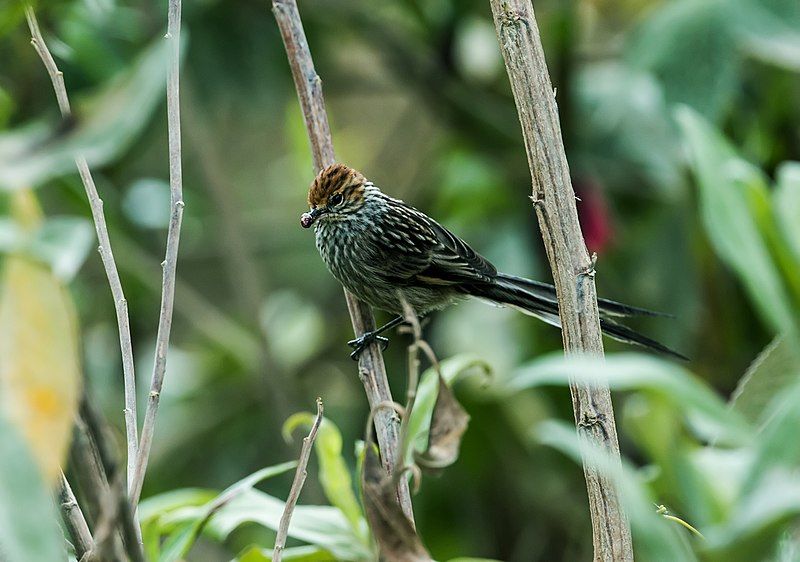
The rusty-crowned tit-spinetail is a species of bird found exclusively in Peru. It belongs to the Furnariidae family, which consists of a variety of species mainly found in South America.
This particular species can be found in two types of habitats: subtropical or tropical moist montane forest and subtropical or tropical high-altitude shrubland. Montane forests are forests located in mountainous areas, typically at elevations of over 1500 m.
This type of environment is characterized by an abundance of tall trees and plenty of wildlife. High-altitude shrubland, on the other hand, is a type of habitat that can be found at even higher elevations, usually over 3500 m.
This habitat is sparser, consisting of low shrubs, grasses, and other low-lying vegetation. The rusty-crowned tit-spinetail is well adapted to both of these habitats, taking advantage of the resources they have to offer.
| Kingdom | Animalia |
| Phylum | Chordata |
| Class | Aves |
| Order | Passeriformes |
| Family | Furnariidae |
| Genus | Leptasthenura |
| Species | L. pileata |
30. Black Metaltail
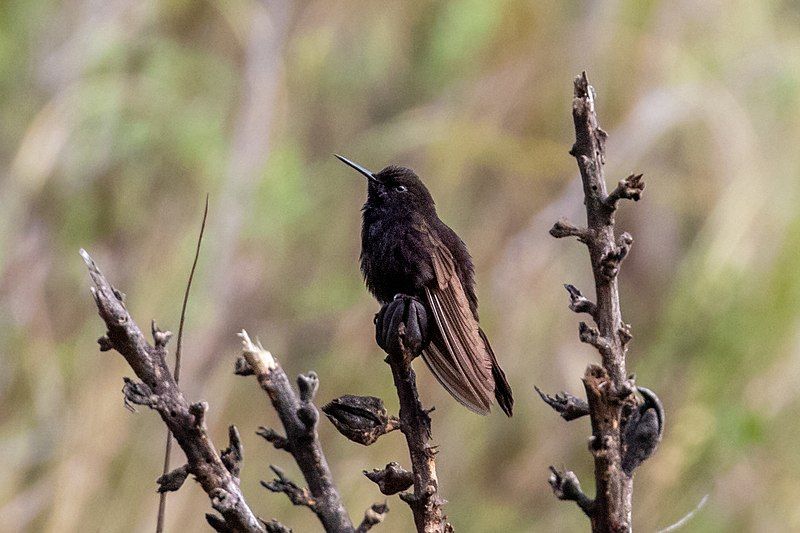
The black metaltail is a species of hummingbird that is part of the “coquettes” family, which is a tribe of the Lesbiini subfamily. Found exclusively in Peru, this species of hummingbird is unique to this area and is not found anywhere else.
The black metaltail is characterized by its bright black plumage and its metallic green tail, which is what gives the species its name. It is a small hummingbird, measuring between 3 and 4 inches in length and weighing less than 5 grams.
This species of hummingbird is known for its impressive flight and agility, as its wings are able to beat up to 80 times per second. The black metal tail is an important pollinator in Peru, helping to pollinate many different plant species in the region.
In addition to this species, there are many other species of hummingbirds found in Peru, each with its own unique characteristics and behavior.
| Kingdom | Animalia |
| Phylum | Chordata |
| Class | Aves |
| Clade | Strisores |
| Order | Apodiformes |
| Family | Trochilidae |
| Genus | Metallura |
| Species | M. phoebe |
31. Black-breasted Hillstar
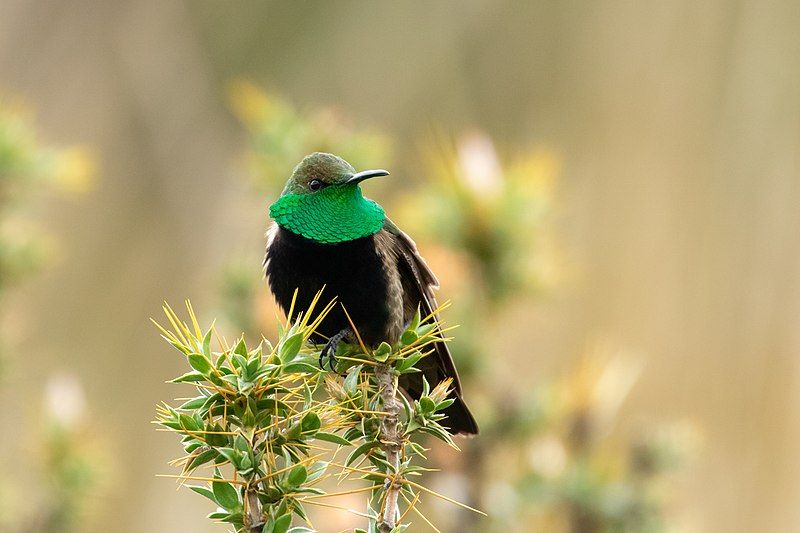
The black-breasted hillstar is a unique species of hummingbird that is found only in Peru. It belongs to the “coquettes”, tribe Lesbiini of the subfamily Lesbiinae.
This species is characterized by its black breast feathers and its bright metallic plumage, which gives it a beautiful, shimmering appearance. Its long beak and its long, slender wings make it a fast and agile bird, able to maneuver quickly around obstacles and catch its prey.
This species is also known for its courtship displays, where the male will hover around the female and perform elaborate aerial displays. The female will then choose her mate and they will build a nest together.
The black-breasted hill star is an important species in Peru, as it contributes to the local ecosystem by pollinating plants and providing food for other animals.
As its habitat is threatened by deforestation and urbanization, it is important that conservation efforts are made to ensure its continued survival.
| Kingdom | Animalia |
| Phylum | Chordata |
| Class | Aves |
| Clade | Strisores |
| Order | Apodiformes |
| Family | Trochilidae |
| Genus | Oreotrochilus |
| Species | O. melanogaster |
32. Ancash Tapaculo
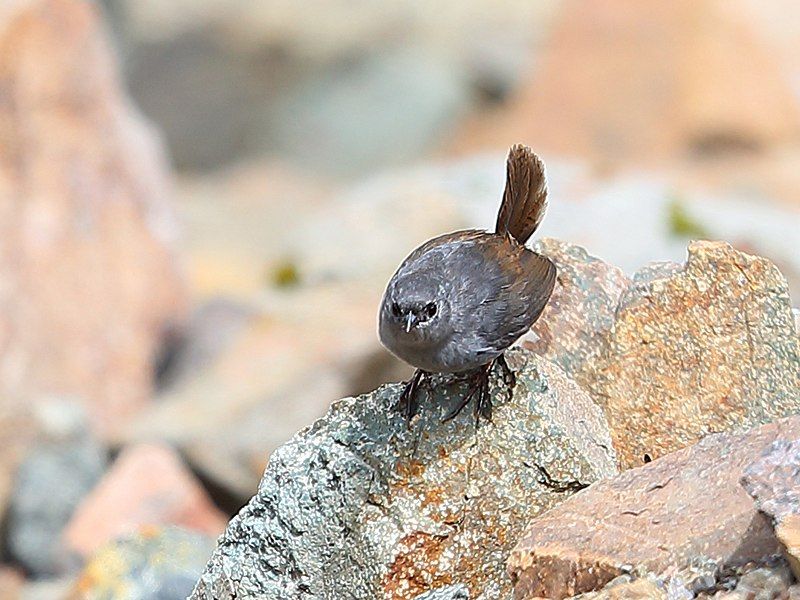
The Ancash tapaculo is a small bird species that is found exclusively in Peru. It is part of the family Rhinocryptidae, which is a group of birds that have distinctive features such as short legs, short wings, and a large head.
These birds are also known for their cryptically colored plumage, which helps them to blend in with their environment. The Ancash tapaculo inhabits humid montane forests and is often found in areas of high elevation. It is a shy bird and is known for its distinctive song.
This species is classified as Near Threatened by the International Union for Conservation of Nature, due to the fact that its habitat is threatened by deforestation. The Ancash tapaculo is a valuable species and one that should be protected.
It is an important part of the biodiversity of Peru, and its loss would be detrimental to the local ecology. Conservation efforts are needed to ensure that this species is able to survive in its natural habitat.
| Kingdom | Animalia |
| Phylum | Chordata |
| Class | Aves |
| Order | Passeriformes |
| Family | Rhinocryptidae |
| Genus | Scytalopus |
| Species | S. affinis |
33. Andean Gull
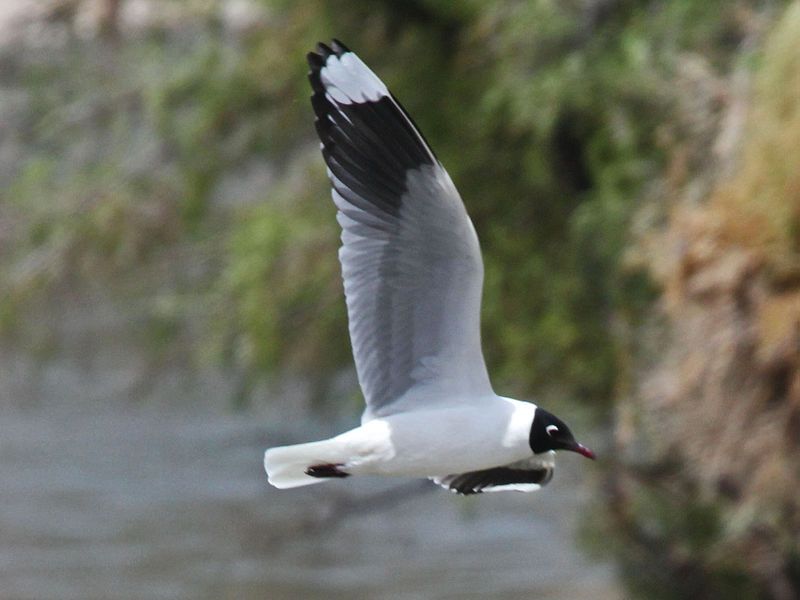
The Andean gull is a species of seabird belonging to the subfamily Larinae of the family Laridae. This family includes the gulls, terns, and skimmers. The Andean gull is found in the countries of Argentina, Bolivia, Chile, Colombia, Ecuador, and Peru.
The Andean gull is a medium-sized gull, with a wingspan of around 65 cm and a body length between 40 and 45 cm. The upper parts of the gull are brownish-grey while the underside is white. The head is blackish-grey with a white eye-ring. The legs and feet are a pinkish-red color.
The Andean gull is not a highly migratory species, but it is known to travel between its breeding and wintering areas. During the breeding season, it is found in the high Andes of South America, breeding on rocky cliffs and in grassland.
During the winter months, it is usually found near lowland coasts, where it feeds on fish, crabs, and other food sources. The Andean gull is listed as a species of Least Concern by the International Union for Conservation of Nature (IUCN).
This is due to its wide range and stable population. Despite this, it is still vulnerable to threats from human activities such as habitat loss and disturbance from tourism.
| Kingdom | Animalia |
| Phylum | Chordata |
| Class | Aves |
| Order | Charadriiformes |
| Family | Laridae |
| Genus | Chroicocephalus |
| Species | C. serranus |
34. Peruvian Seaside Cinclodes
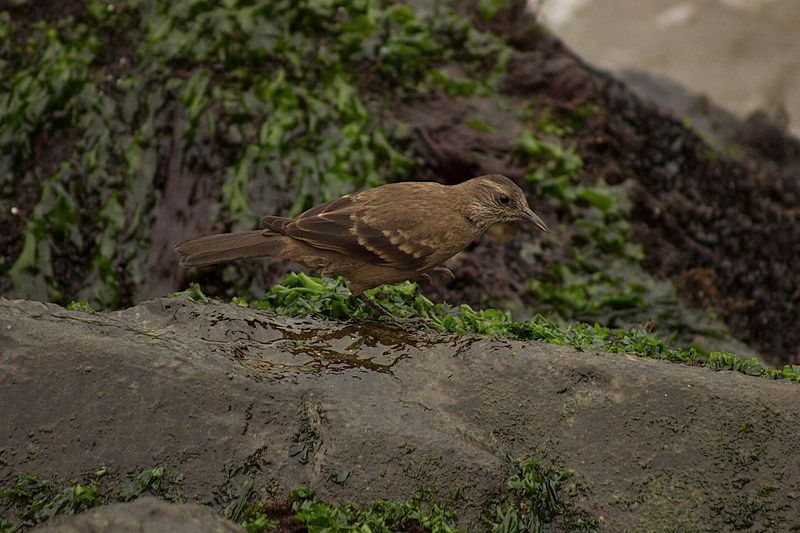
The Peruvian seaside cinclodes, also known as the surf cinclodes, is a species of bird that belongs to the Furnariidae family. This species is only found in the rocky shorelines of Peru and is not found anywhere else in the world.
It is usually classified as a subspecies of the Chilean seaside cinclodes, an endemic species of bird that is found near the coasts of Chile. The Peruvian seaside cinclodes is a small bird with greyish-brown plumage and a pale yellowish patch on its eyes.
Its diet consists mainly of insects, small fish, and crustaceans. It lives in small flocks and is known to use its long bill to probe the crevices of rocky shores for food.
The Peruvian seaside cinclodes is an endangered species, and its population is declining due to habitat destruction, overfishing, and pollution.
It is important that we take action to protect this species, and the fragile coastal environment that it inhabits so that future generations can enjoy its beauty.
| Kingdom | Animalia |
| Phylum | Chordata |
| Class | Aves |
| Order | Passeriformes |
| Family | Furnariidae |
| Genus | Cinclodes |
| Species | C. taczanowskii |
35. Koepcke’s Screech Owl
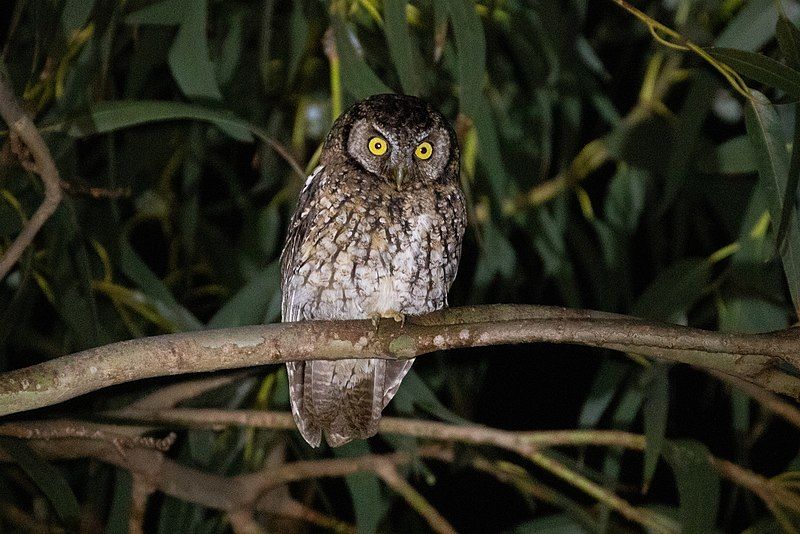
The Koepcke’s screech owl is an owl species that can only be found in Peru. It belongs to the Strigidae family, which is a group of owls that includes barn owls, bay owls, and true owls.
This species of owl is unique to Peru, meaning it is only found in that particular country and nowhere else. It can be found in the western part of Peru, in the areas of Tumbes, Piura, and Lambayeque.
The Koepcke’s screech owl is a medium-sized owl, measuring around 16-19 cm in length, and is olive-brown in color with yellow eyes. It is a nocturnal bird, meaning it is active at night, and is known for its loud screeching call.
This species of owl is also known to be quite social, often living in small groups together. Despite its limited range, the Koepcke’s screech owl is not considered a threatened species and its population is believed to be stable.
| Kingdom | Animalia |
| Phylum | Chordata |
| Class | Aves |
| Order | Strigiformes |
| Family | Strigidae |
| Genus | Megascops |
| Species | M. koepckeae |
36. Spot-winged Pigeon
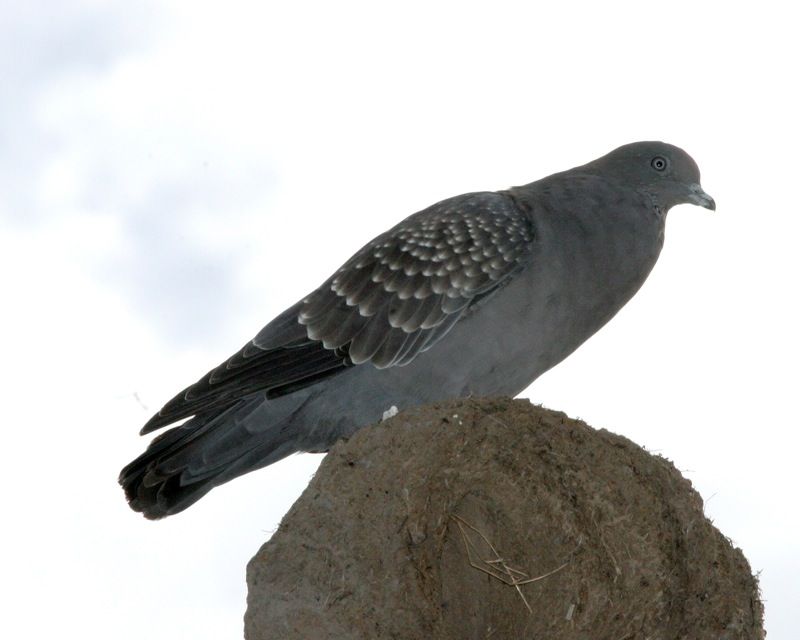
The spot-winged pigeon is a species of bird belonging to the family of Columbidae. It is mostly found in South American countries like Argentina, Bolivia, Brazil, Chile, Paraguay, Peru, and Uruguay. This species of bird has an even distribution throughout the region.
It is characterized by having a gray-brown color with white spots on its wings. It has a short tail and a long, slender body that is slightly curved. Its feet are large and powerful, enabling it to climb and hop around.
It has a diet that consists of a variety of seeds, fruits, and insects. This bird is mainly active during the day, and it nests in trees or in cliffs. It is a social creature, often seen in groups of up to ten individuals.
The spot-winged pigeon is an important species in its ecosystem, helping to spread seeds and pollinate flowers. It is also a popular game bird, hunted by humans for its meat and feathers.
| Kingdom | Animalia |
| Phylum | Chordata |
| Class | Aves |
| Order | Columbiformes |
| Family | Columbidae |
| Genus | Patagioenas |
| Species | P. maculosa |
37. Stripe-headed Antpitta
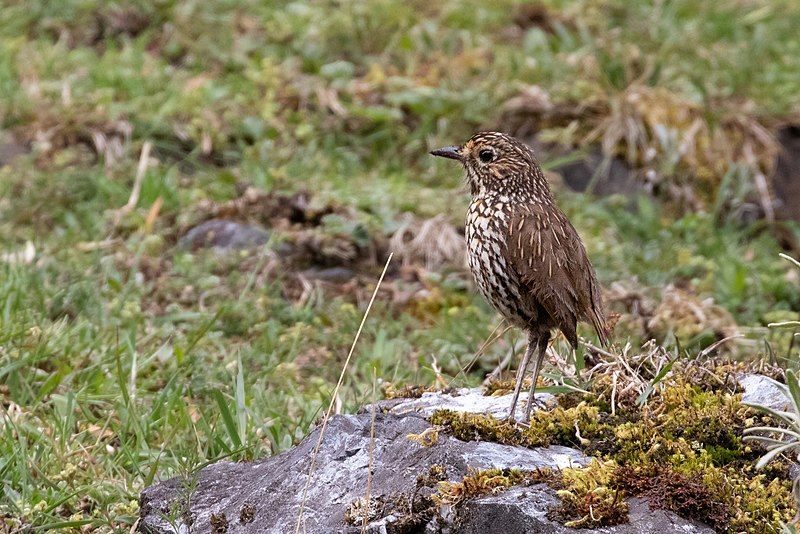
The Stripe-headed Antpitta is a species of bird that belongs to the family Grallariidae. It was first described by German ornithologist Jean Louis Cabanis in the mid-1800s.
This species is found in Peru and western Bolivia, and its natural habitat is primarily subtropical or tropical moist montane forests. This type of forest is characterized by higher elevation, humid climates, and abundant vegetation.
The Stripe-headed Antpitta is an elusive species and is rarely seen in the wild. It is a medium-sized bird with a short bill and a distinctive black-and-white striped head.
Due to its rarity and limited range, the Stripe-headed Antpitta is listed as a Near Threatened species by the IUCN. Conservation efforts are needed to ensure that this species does not become endangered or extinct in the future.
| Kingdom | Animalia |
| Phylum | Chordata |
| Class | Aves |
| Order | Passeriformes |
| Family | Grallariidae |
| Genus | Grallaria |
| Species | G. andicolus |
Conclusion
Lima is a great place to observe birds. There is a wide variety of species that can be found in the area, from the common hummingbirds and pigeons to the rarer species such as the Andean Condor.
Birdwatching in Lima is a great way to experience the beauty of nature and appreciate the diversity of life.